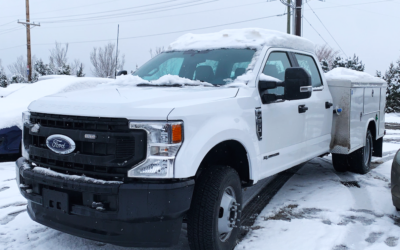Back to Work for Fleets
As the COVID-19 pandemic is slowly becoming a part of everyday life, businesses across the world are trying to grapple with this new reality. All industries are looking for ways to adjust their strategies to this new “normal”. The same is true for the fleet industry, which is trying to figure out how to tweak the post-COVID-19 fleet management to ensure the safety of its employees and customers.
Due to the spread of COVID-19, most fleet companies were forced to shut down or at least curtail a large part of their everyday operations as they largely depended on the delivery of essential goods and heavy tools and equipment.
However, now that we know that the coronavirus is here to stay, what’s the future of the fleet industry?
Certainly, fleet companies can’t expect to operate the way that they were operating before the pandemic. Things will change drastically and, hopefully, for the better.
So, what will the new normal be for fleets? Here’s a breakdown of a few factors that the fleet industry needs to consider to successfully navigate their business in the wake of the virus:
Consider the Safety of Your Employees
As a fleet company, your first and foremost priority should be to keep your employees safe. As the US slowly lifts the COVID-19 lockdown, there are certain precautionary measures that you need to exercise at all costs. These include:
Practice Social Distancing
Make sure that your employees maintain proper social distancing protocol during work hours. If you have a job that requires more than a single-person crew, then perhaps you could look into an additional mode of transportation for your crew to ensure that they don’t sit with each other in closed quarters for too long.
Keep Clean and Sanitize
Make sure that your employees take proper care to keep their hands clean at all times. This includes regular hand-washing and sanitizing when necessary. To encourage this behavior, you can install hand sanitizer dispensers and portable washbasins across the office site and hand out hand sanitizers to the drivers when they leave for a job.
Proper and Vigilant Monitoring of Symptoms
You need to make sure that your employees are staying safe and being watchful of any symptoms of COVID-19 that might appear. To make certain that your employees are aware of the symptoms and aren’t showing any, you can distribute questionnaires for them to fill out and even take their temperatures before their shift starts.
Trace Employees’ Contact With Staff and Customers
As you reopen your operations and onsite jobs, make sure to keep a track of whom your employees are meeting up with and interacting with while on the job including customers and other staff. This will help you track down the first patient who spread the virus, in case of illness.
Follow Proper Protocol for Fleet Vehicles
As a fleet company, you can’t expect to survive out there are perform your day to day operations without your vehicles. Post COVID-19, fleet companies need to follow certain considerations regarding the use and cleanliness of their vehicles. Here’s what you need to keep in mind:
Vehicle Assignment
The way you assign your vehicles to your employees will need to change. You simply can’t send more than two technicians to a job site in one vehicle. You might need to assign more than one truck to your employees to reach the job site. This will help you reduce the number of drivers, technicians, and support staff that you send in one unit and allow you to reduce the risk of potential exposure.
Sanitize and Clean the Vehicles
The first order of business is to clean and sanitize your vehicles before you let your employees use them. So, make sure to add cleaning and sanitizing the vehicle into your routine and make certain that the vehicles are disinfected before your drivers take them onsite. The trick is to make this the first “job” that they perform at the start of each working day.
Vehicle Usage
You also need to review and alter the way you use your vehicles. When it comes to vocational fleets, each vehicle often has multiple operators working with it and touching it from various points such as crane operations and lift gate controls. You need to keep count of the personnel that’s using the vehicle and how you clean each part of the vehicle afterward.
Protocols for Your Business
Here are some general business protocols that you need to follow to ensure the smooth running of operations:
Be Understanding
You need to take a step back and re-evaluate how you conduct your business. Some businesses were greatly affected by the virus and some were only indirectly affected. Either way, you might see many companies, including clients, who’ve gone out of business or struggling to sustain themselves due to COVID-19. The trick here is to be as understanding as possible with each other during this tough time and to persevere through it together.
Communicate Openly
An important aspect that will allow things to get back to normal quickly is to maintain an open and honest relationship with your clients. Be as communicative as possible with them; try to call them up or set up a video conference to keep tabs on them and offer your assistance in whatever capacity possible. Proactively stay in touch with your partners and industry suppliers to let them know your position and what it is that you need from them to move forward successfully.
The Bottom Line
In the wake of COVID-19, fleet operations and management will have a new and improved outlook. The key takeaway here is that fleet companies need to follow certain protocols such as practicing social distancing, keeping clean, and keeping their vehicles clean to keep everyone safe.
Source:
https://www.worktruckonline.com/359306/how-to-return-to-a-new-fleet-normal






